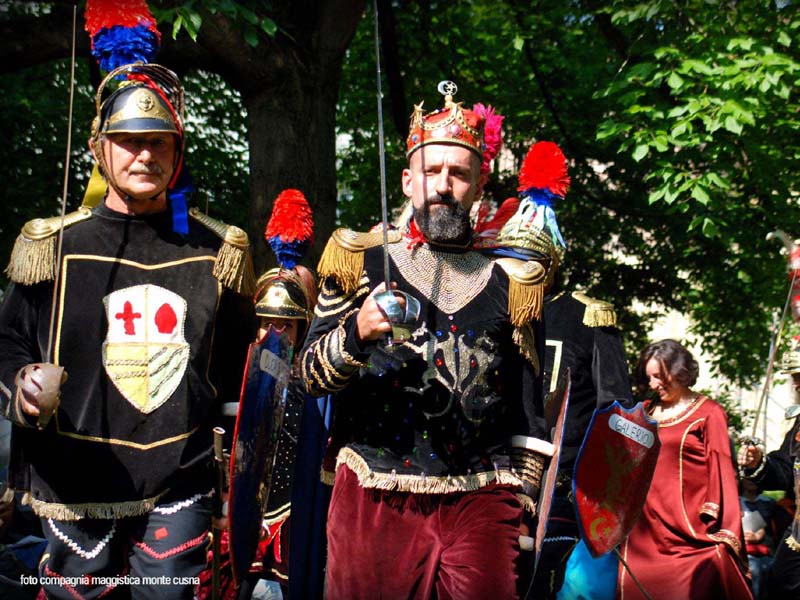Life is an amazing series of connections. Between people, between people and nature, between knowledge and action, across time and place. - MaB UNESCO
A mix of culture
The Park as a Passageway
In ancient times, the Park was known as a "passageway" as it was the shortest route from northern Italy to the Mediterranean Sea and Rome. As early travelers passed through the region, they diffused culinary and artistic influences from several European cultures. Today, many travelers still utilize the Park as a "passageway" to access Italy's more popular tourist destinations such as Cinque Terre, Florence, and Rome extending the rich cultural landscape of the territory.
Ancestral Travel: Shepherds and Transhumance
In addition to being a passageway, historically, the Park was a common dwelling for shepherds who wandered with sheep that fed off the grasslands on the ridge. For centuries, the shepherds and farmers developed a unique rural culture that focused largely on transhumance, the practice of moving livestock from one grazing ground to another on a seasonal cycle. During the winter, the shepherds would travel to Tuscany for work as their young children and older family members stayed in the villages. Once the shepherds came back to the Park lands, the shepherds brought news, writings, songs, and art to share with others in the village. Although much less common, traces of transhumance can still be seen in the Park today.
THE BOND WITH TUSCANY
The cities of Tuscany have always been - even for the north side of the park - the main reference point for the entire TEA park territory. The Park is intimately connected to Tuscany through centuries of art, architecture, poetry and travel.
Traditions
Family
Family is the true cornerstone of TEA Park culture. In fact, multi-generational families consisting of parents, grandparents, aunts, uncles and cousins commonly live together in the same house or village. Families have lived in the same place for generations, and strong family ties are spread across the park and beyond. Families own and operate businesses and spend the majority of their free time together. When you visit the TEA Park, you are a guest of our family!
Religion
Religion is one of the cornerstones of traditional Italian culture and the Park is no exception. Churches in the Park villages are places where the members of the community gather and they often contain precious treasures and works of art that reflect the local region. In honor of customary religious beliefs from ancient cults, each village in the Park has a patron-saint to watch over the safety, health and well-being of the community's families. There is also a tiny ediculae called "maestà," dedicated to saints and decorated with flowers to mark roads and community borders.
Day of the Patron-Saint
Each patron-saint has their own day on the Catholic calendar, and that day is a holiday for that specific village. In every village the patron-saint is celebrated in a different way, but normally a statue of the saint is ushered around the village followed by community members singing and praying. These processions are an important part of the Park's culture as they reflect local religious and family values. The Day of the Patron-Saint is a festival for the whole community, and normally there is a market and a party in the village center. Relatives who live elsewhere often return home for this event and even people who normally do not attend church also participate.
Food and Cuisine
In the TEA Park, all aspects of food are engrained in the culture. How to grow food is an important part of our culture- growing chestnuts, spelt, vines, and olives are centuries old skills that are passed on from generation to generation. How to make food is equally as important- the art of making parmesan cheese or parma ham could take books to explain. How to cook and eat food is an art in itself and often taught from a young age in family settings.
Sense of Community: Living Side by Side
The Park consists of a series of very small hamlets and villages that are sometimes just a collection of houses. Most of the hamlets and villages date back to ancient times and in some areas are from the prehistoric era. The houses are located close together so they are easier to heat during the cold winter months. Inside the hamlets, you commonly travel through tunnels and alleys, to give inhabitants shelter form wind, rain and snow. By living and working so closely together, the communities are compact and share legends, nicknames, dialects, and even dishes.
History and Community Ties
The TEA Park consists of small communities that share thousands of years of rich history that include friendship or enmity. Some have fought for centuries over the ridgeline grasslands while others maintain friendships for centuries and hold festivals to celebrate their camaraderie. Every community in the TEA Park has very particular opinions along with an entire set of anecdotes and several generations of gossip.
Il Canto del Maggio
Do you like theater? Have you always wanted to see a theatrical performance in an open-air venue...in Italy? If so, Il Canto del Maggio is the festival for you!
Il Canto del Maggio is a widely-known festival of Italian folk theatre that is based on the clash between Moors and Christians during the Crusades. The reenacted stories featured during the festival focus on the core principles of good and evil and are often held outside on farmlands or in chestnut groves. The soundtrack for the performances are usually provided by a simple set of string instruments and an accordion. Il Canto del Maggio is typically held at the end of July or early August.









